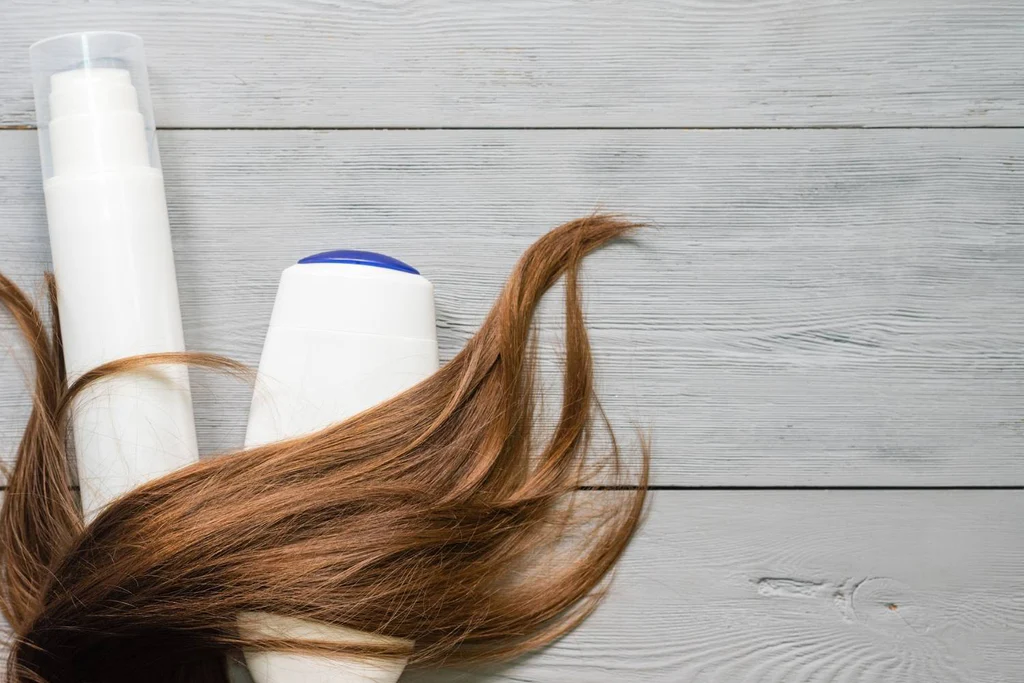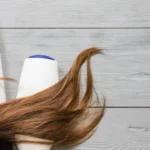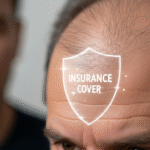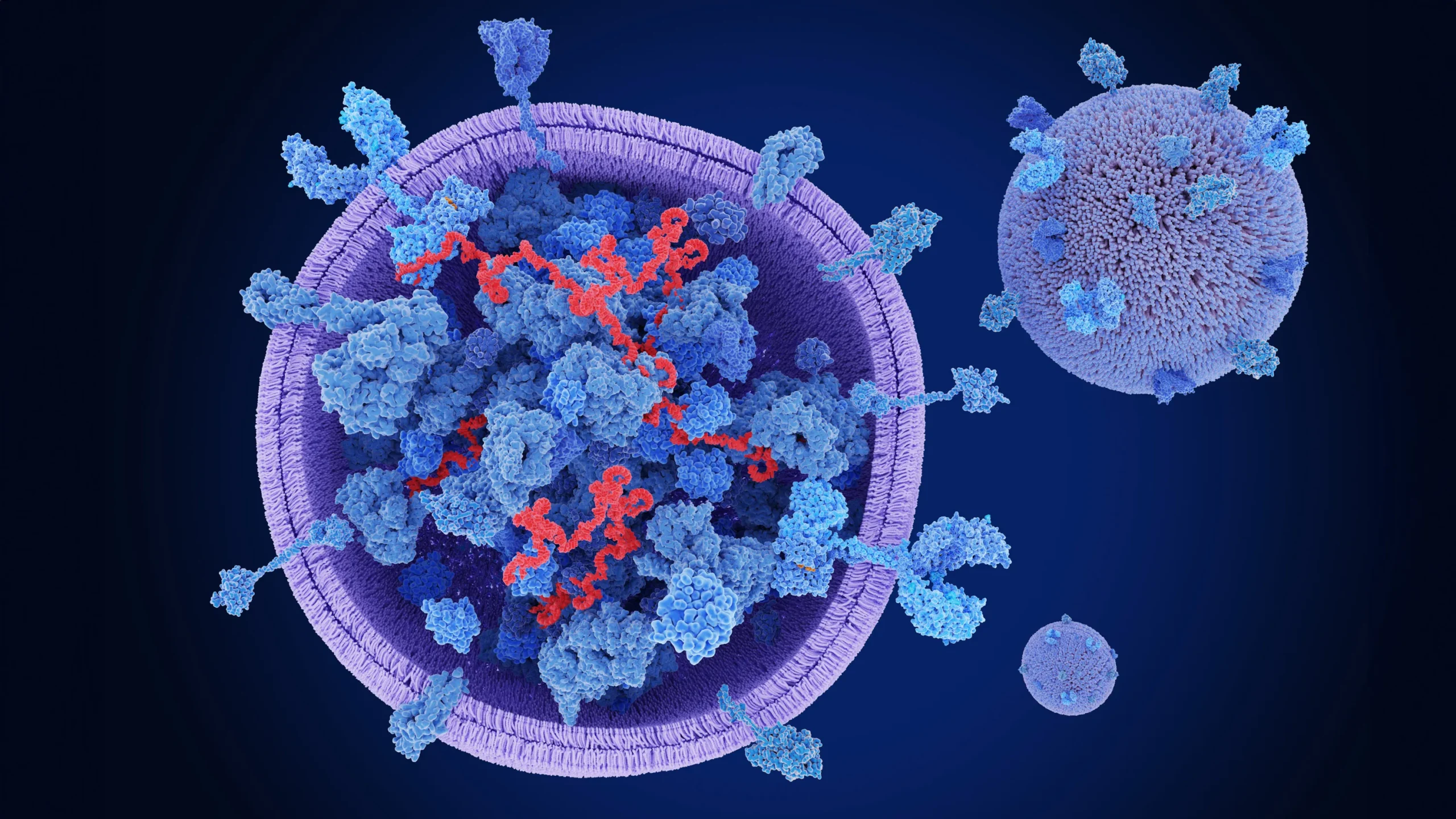Many people turn to Nutrafol in hopes of restoring their thinning hair. But instead of immediate regrowth, some users report an increase in shedding during the initial weeks. This understandably leads to concern: does Nutrafol cause hair loss, or is this temporary shedding part of a longer-term recovery process? In this in-depth article, we explore …
Many people turn to Nutrafol in hopes of restoring their thinning hair. But instead of immediate regrowth, some users report an increase in shedding during the initial weeks. This understandably leads to concern: does Nutrafol cause hair loss, or is this temporary shedding part of a longer-term recovery process?
In this in-depth article, we explore how Nutrafol works, what shedding means, and what both clinical studies and dermatology experts say. You’ll gain a clearer understanding of Nutrafol’s impact, realistic expectations, and how to approach your hair restoration journey with confidence.
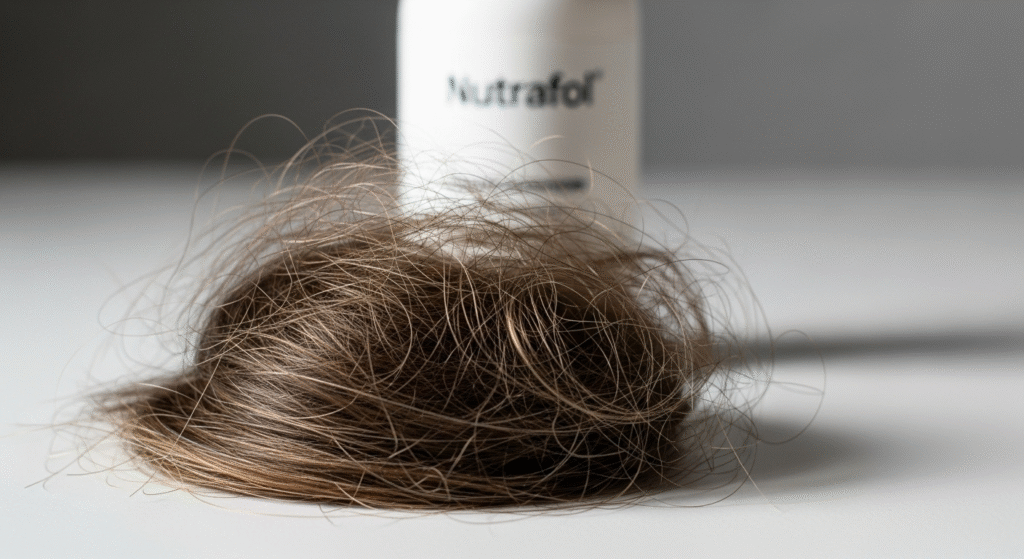
What Is Nutrafol and How Does It Work?
Nutrafol is a science-backed, nutraceutical supplement formulated to address multiple causes of hair thinning. Unlike topical treatments, Nutrafol works from within, aiming to resolve the biological imbalances that lead to hair loss.
Nutrafol Ingredients and Their Purpose
Nutrafol’s formula includes a synergistic mix of botanical ingredients, vitamins, and adaptogens:
- Saw Palmetto: Inhibits DHT, a hormone often responsible for androgenetic alopecia.
- Ashwagandha: A powerful adaptogen that lowers cortisol levels and reduces stress-related hair fall.
- Biotin: Supports keratin production and overall hair shaft integrity.
- Marine Collagen: Replenishes amino acids vital for follicular strength.
- Curcumin & Tocotrienols: Fight inflammation and oxidative stress.
These ingredients are designed to work in tandem, helping restore scalp health and encourage stronger, fuller hair growth.
How Nutrafol Claims to Promote Hair Growth
The company positions Nutrafol as a holistic solution, emphasizing the importance of internal wellness for hair vitality. Nutrafol targets four primary root causes:
- Hormonal Imbalance
- Chronic Stress
- Inflammation
- Poor Nutrition
Clinical trials conducted by Nutrafol and reviewed by independent dermatologists claim measurable hair density improvements over time, especially in women experiencing hormonal or stress-related thinning.
Does Nutrafol Cause Hair Loss? A Closer Look
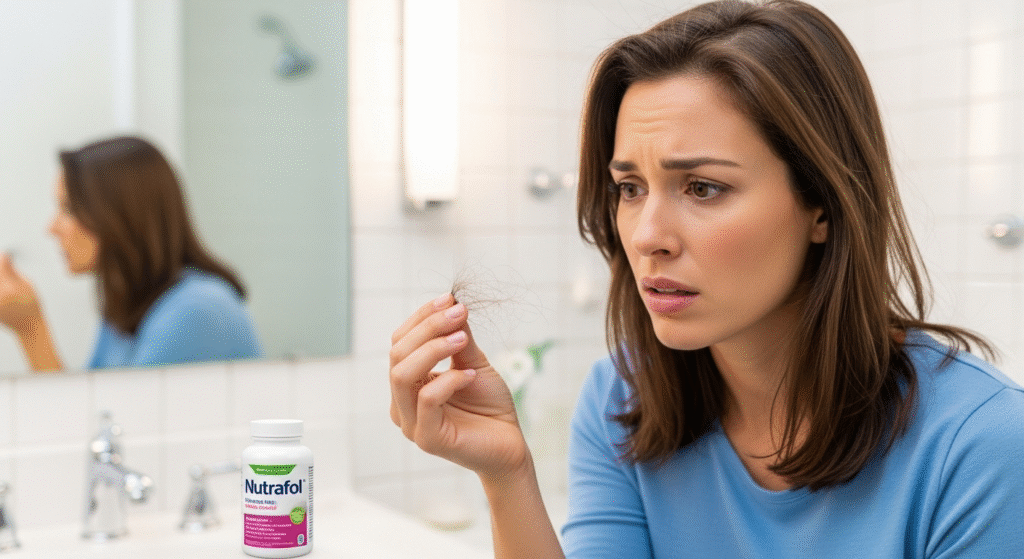
Let’s address the central concern: Can Nutrafol lead to hair loss?
Is Shedding Normal with Nutrafol?
Yes. Initial shedding is not only common, it’s biologically expected. This is a phase known as telogen effluvium, where old, weakened hairs are pushed out of the follicles to make room for new growth. The shedding typically occurs during the first 2–6 weeks of supplementation.
While it can be alarming, it’s a sign that dormant follicles are re-entering the growth phase (anagen).
Pro Tip: If shedding continues for longer than 90 days, or becomes excessive, it could indicate another underlying condition—consult a board-certified dermatologist.
Scientific Insight
A peer-reviewed 2018 study in the Journal of Drugs in Dermatology found that women taking Nutrafol daily for six months saw a statistically significant increase in hair count and thickness—with no adverse events related to increased hair loss.
Understanding the Hair Growth Cycle
To fully understand Nutrafol’s effects, it’s essential to grasp how the hair growth cycle works.
The 3 Phases of Hair Growth
- Anagen (Growth Phase): Lasts 2–7 years; 85–90% of hair is in this stage at any given time.
- Catagen (Transition Phase): Lasts 2–3 weeks; follicles shrink and detach.
- Telogen (Resting/Shedding Phase): Lasts ~3 months; hair sheds and makes way for new strands.
Nutrafol may accelerate the transition from telogen to anagen, causing a temporary uptick in shedding.
Why Some Users Experience Increased Shedding
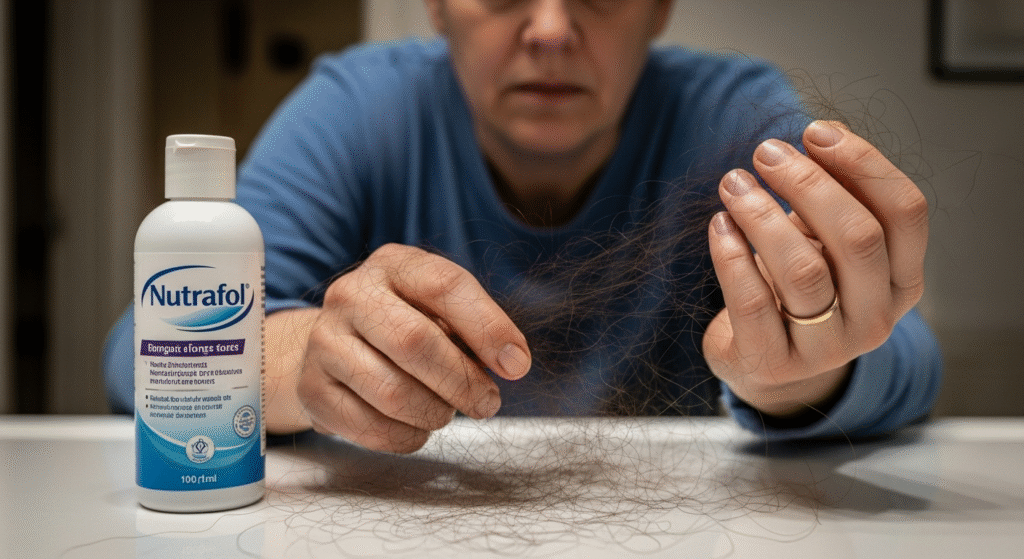
While the idea of a supplement “causing” shedding can sound negative, there are several logical explanations that debunk this myth.
1. Telogen Effluvium Triggered by Reset
Your scalp may interpret the new nutrients as a biological “reset,” forcing the exit of dormant or poorly anchored hairs to allow healthier growth.
2. Adjustment Period to Hormonal Changes
Ingredients like saw palmetto and ashwagandha influence hormone regulation. A hormonal rebalancing period can trigger short-term shedding.
3. Expectation vs Reality
Consumers may expect immediate results. However, hair growth is a slow biological process—typically taking 3 to 6 months to manifest noticeable change.
Who Should-and Shouldn’t-Use Nutrafol?
Best Candidates for Nutrafol:
- Women experiencing postpartum or perimenopausal hair thinning
- Men with early-stage androgenetic alopecia
- Those with stress-induced hair fall
- Individuals recovering from telogen effluvium
Individuals Who Should Avoid Nutrafol:
- Pregnant or breastfeeding women (unless using Nutrafol Postpartum)
- People on blood thinners or hormone-altering medication
- Those allergic to marine-based ingredients or ashwagandha
What Experts Say: Medical Opinions and Trials
Clinical Studies Summary
A double-blind, placebo-controlled study over six months showed:
- 80% of participants saw improved hair density
- 77% reported reduced breakage
- No adverse effects linked to increased hair loss
These results suggest Nutrafol helps more often than it harms.
How to Maximize Results with Nutrafol
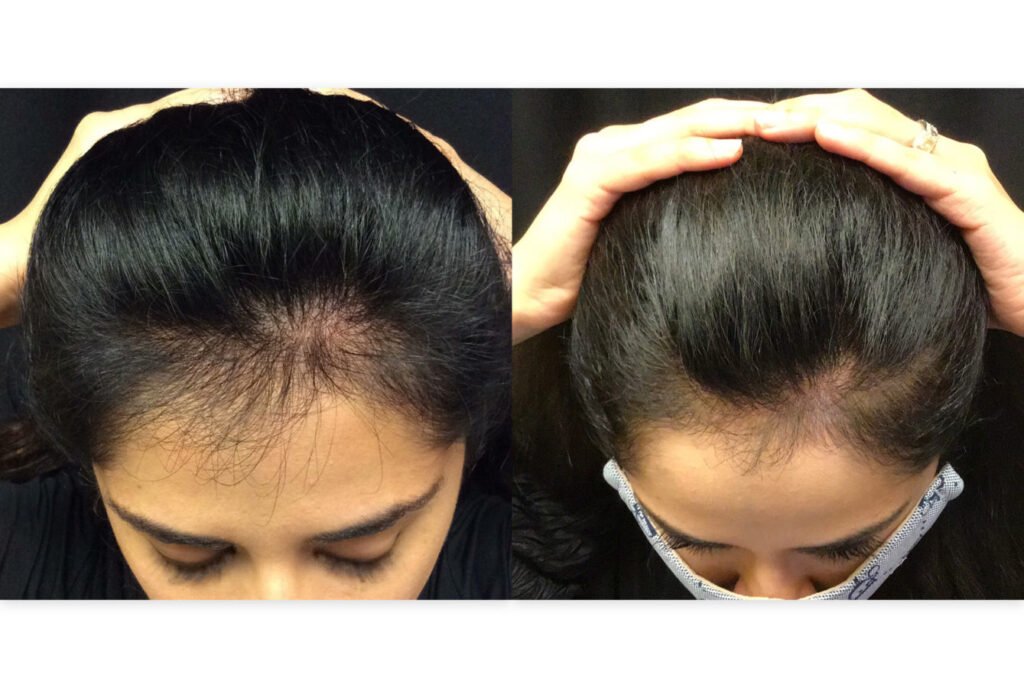
Key Strategies:
- Take it consistently: Daily use is essential.
- Give it time: Results typically appear after 90–120 days.
- Combine with diet: Ensure intake of protein, zinc, vitamin D, and iron.
- Reduce stress: Pair with meditation or light exercise for best outcomes.
Common Mistakes to Avoid:
- Stopping after 30 days due to shedding
- Taking it on an empty stomach
- Ignoring root causes (e.g., thyroid issues)
Nutrafol vs Other Hair Loss Solutions
If you’re unsure whether Nutrafol is right for you, here’s how it compares:
| Treatment | Method | Time to Results | Side Effects Risk |
|---|---|---|---|
| Nutrafol | Oral Supplement | 3–6 months | Low |
| Minoxidil | Topical | 4–8 weeks | Moderate (irritation) |
| PRP Therapy | Injectable | 1–3 months | Moderate |
| Hair Transplant | Surgical | 6–12 months | High |
Final Verdict: Does Nutrafol Really Cause Hair Loss?
No, Nutrafol does not cause long-term or permanent hair loss. Temporary shedding is a known and manageable side effect as your hair adjusts to the active ingredients. With consistency and patience, Nutrafol can support real, noticeable growth.
The bottom line: Don’t panic if you shed a little before you grow a lot.
FAQ
Does Nutrafol cause initial shedding?
Yes, and it is often a sign that the supplement is working to transition dormant follicles back to growth.
Is Nutrafol FDA-approved?
No. As a dietary supplement, Nutrafol is not FDA-approved, though its ingredients are Generally Recognized As Safe (GRAS).
Can it cause hormonal imbalance?
Nutrafol aims to rebalance hormones like DHT and cortisol, not disrupt them. But always consult your doctor if you have endocrine concerns.
Is Nutrafol safe long-term?
Yes, most users take it for 6–12 months with no issues. Long-term use is generally safe under medical supervision.
When should I expect results?
Most users notice visible improvements after 3–6 months.
Ready to Take Control of Your Hair Health?
If you’re considering Nutrafol but unsure where to begin, let a qualified expert help.
Book a consultation with Dr. Uzma Irfan, an ISHRS-certified surgeon in Islamabad to create a personalized plan for your hair restoration. From supplements to advanced therapies like PRP or FUE, we’re here to guide your journey.

